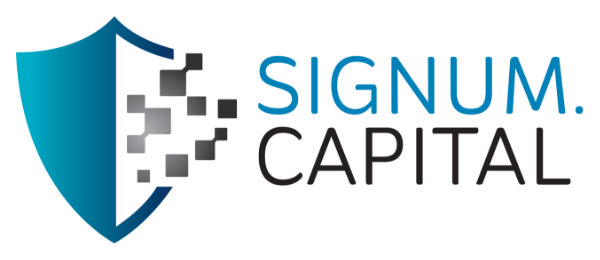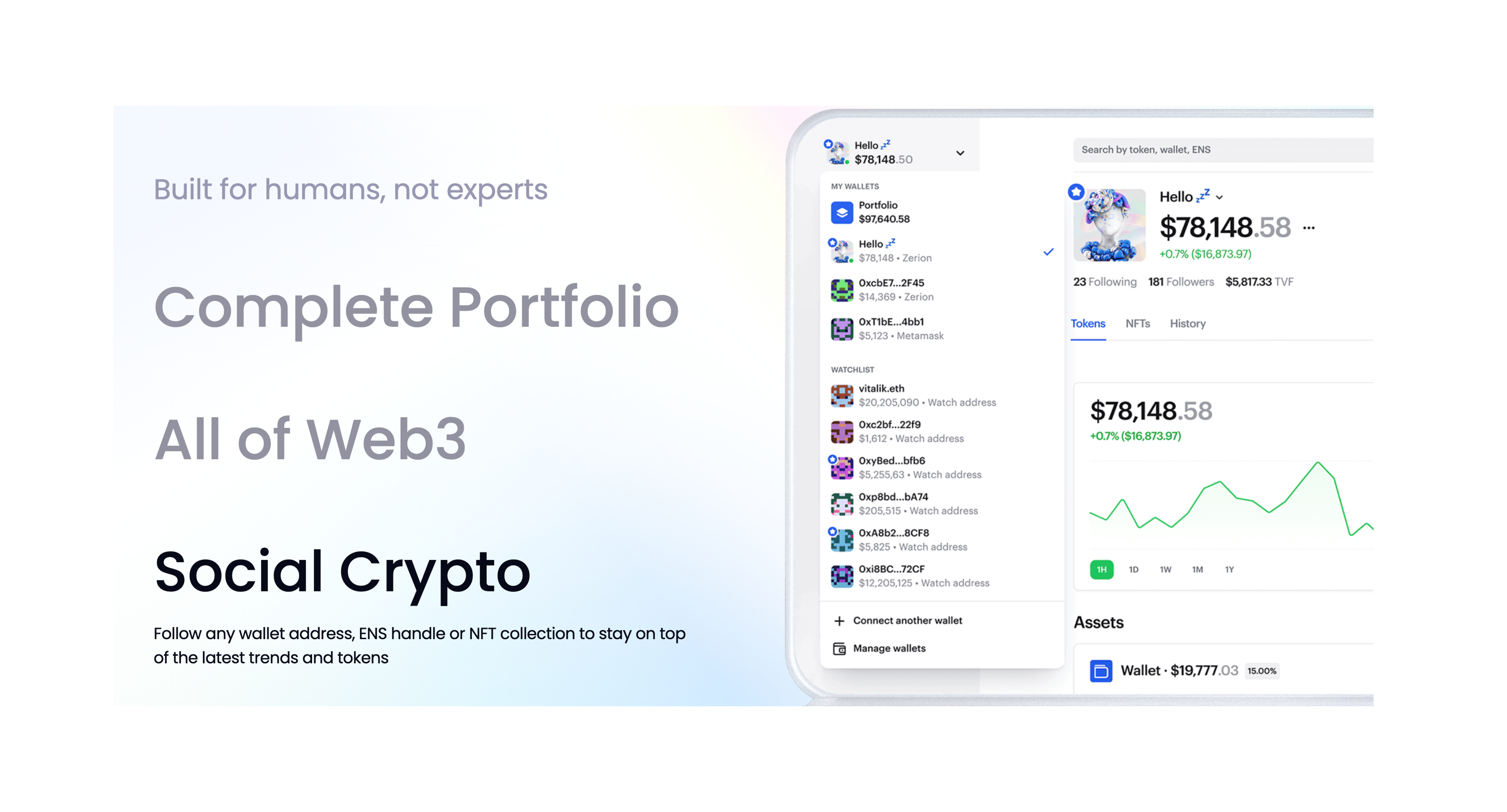1) Can you give an introduction about yourself and what is Zerion? Is there any significance in the name?
My name is Evgeny, and I am the CEO and co-founder of Zerion, a smart and social web3 wallet and browser designed to meet the needs of modern web3 citizens. The name Zerion is a result of our evolution. Initially, we started as EtherionLabs in 2016, focusing on building smart contracts. Over time, our operations evolved, and the name shortened to Etherion and finally Zerion.
2) Zerion started off as a portfolio tracker in 2016 and has since evolved into what it calls now a Smart Social Web3 Wallet. Can you talk about its evolution, was it a natural progression?
Absolutely, the evolution of Zerion has been a natural progression that reflects the changing needs and complexity of the blockchain ecosystem. In the early days, we began as a portfolio tracker, identifying a niche for an informational tool that could complement existing wallets. Users could leverage Zerion to track tokens in their wallets, which was a functionality that many wallets lacked at the time.
Recognizing the growing trend towards decentralized finance, or DeFi, we then expanded our services to become a DeFi aggregator. We integrated various DeFi protocols, starting with Uniswap – where we were the first-ever integration, followed by Compound and Maker. This move allowed users to swiftly swap, lend, and stake all within our convenient interface, making Zerion a one-stop solution for DeFi interactions.
As our platform grew and more functionalities were added, our users started to see us as more than just a DeFi aggregator – they saw us as their wallet. It made sense. We had already built much of what a modern web3 wallet should look like. So, we took the next logical step and fully transitioned into a Web3 wallet and browser. Now, Zerion is not only a tool to manage one’s crypto portfolio but also a portal to explore and interact with the broader decentralized web.
This evolutionary journey has been guided by our commitment to our users and our desire to provide the most comprehensive, user-friendly, and valuable tool in the space.
3) The wallet space is rather competitive with new players emerging every now and then and all are trying to solve the common goal of easy onboarding, seamless web2 like user experience and having rich features. Zerion seemed to have all the above mentioned, is Zerion the leading wallet right now? If yes, would you like to share some metrics? If no (leading wallet), why so?
While we are a significant player in the wallet space, Zerion currently holds the position of the leading challenger wallet. The competition from established entities like Metamask and Coinbase is indeed stiff. Despite this, we’ve managed to carve out a strong position for ourselves, distinguishing Zerion through our robust features and user-friendly experience. We have over 250k funded wallets and our users conduct more than 300k transactions per month. Our growth has been consistent since the beginning of the year, and if our strategic plans pan out as we anticipate, we aim to be amongst the most used wallets by next year.
4) What do you foresee about competition in the wallet space in the future?
I predict that competition in the wallet space is reaching its peak and will start to decline. Monetization is a significant challenge in this industry, and those who cannot establish a sustainable revenue model will find it increasingly difficult to survive. Smaller players are likely to get absorbed by larger ones or exit the market, leading to a more consolidated industry.
5) With all the hype about account abstraction EIP 4337, would Zerion be leveraging it and offer some of the features such as social recovery, gasless transactions etc?
Yes, we’re keenly following the developments around EIP 4337 and recognize the immense potential it holds for improving the user experience. Features such as gasless transactions and social recovery can make web3 interactions more seamless and accessible. That being said, our approach towards integrating these features is cautious due to the current cost implications. As it stands, operations with EIP 4337 are significantly more expensive compared to traditional Externally Owned Account (EOA) transactions, which poses a barrier to adoption. We’re optimistic that as the technology matures and becomes more cost-effective, we’ll be able to leverage EIP 4337 to its full potential and deliver these valuable features to our users.
6) Can you share some of Zerion’s future plans or roadmap?
Absolutely, we have several key areas of focus for Zerion’s future development:
Security enhancements: Security is paramount for our users, and we are committed to making them feel safe when signing transactions in Zerion. This includes introducing transaction simulations for better transaction visibility, phishing detection to guard against malicious attempts, and smart contract and address verification to ensure interactions are safe and secure.
Improved browsing: With the rise of decentralized applications (dapps), it’s important for our users to be able to navigate the decentralized web efficiently. We plan to enhance our already industry-leading dapp browser experience, providing a more intuitive, responsive, and seamless browsing environment.
Every token, every chain: This is more than just a motto for us – it’s our mission. We aim to integrate as many chains as possible in the near future, ideally all of them. The goal is to enable our users to seamlessly use every new Layer 2 solution that emerges. We want Zerion to be the go-to wallet for interacting with the expanding universe of digital assets and blockchain networks.
These plans reflect our commitment to making Zerion the most secure, user-friendly, and comprehensive web3 wallet in the industry.
7) Lastly, what do you wish for Zerion and the crypto industry as a whole?
For Zerion, my goal is clear and ambitious: by 2024, we aim to surpass Metamask in terms of active web3 citizens. We are working tirelessly to make this a reality. We believe in our mission and the tools we’re developing to bring us closer to this goal each day.
As for the crypto industry as a whole, I am excited for it to finally transition into a full-fledged web3 industry. The focus on trading and asset prices, characteristic of the crypto era, has in some ways held back the industry. But now, with the emergence of zk EVM L2 solutions, transactions are cheap and fast, bringing scalability to a level we’ve never seen before.
This means that the technology is ripe for new use cases, opening up endless possibilities for what people can build. It’s going to be an exciting time for everyone in the space. I’m eager to see what innovative solutions and applications will emerge, and I look forward to Zerion being a part of this transformation.

